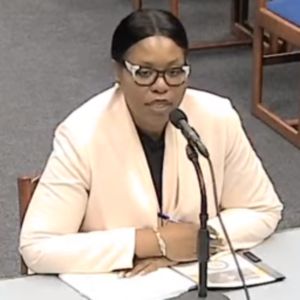Amherst-Pelham schools look to address school absences with new plan

Amherst Regional High School
| Published: 04-14-2024 10:01 AM |
AMHERST — Understanding that chronic absences affect the ability of students to learn and contributes to achievement gaps among some school populations, the Amherst-Pelham Regional schools are developing steps to reduce absenteeism as part of its state-mandated Student Opportunity Act Plan.
With a focus on five groups of students — English learners, students with disabilities, students from low-income families, African American and Black students, and Hispanic and Latino students — the plan notes that chronic absenteeism, defined as 10% of the school calendar, or 18 days, is prevalent among those populations.
“(There are) still very high rates for chronic absenteeism, so the goal of this plan is to come up with evidence-based programs to address some of these concerns,” Mary Kiely, the curriculum administrator for the Amherst, Pelham and regional schools, told the Regional School Committee last week.
Between 40-45% of students in these groups are chronically absent, Kiely said, while the overall rate at the middle and high schools was 26% for 2023. The concern, Kiely said, is that fewer than a quarter of students statewide with chronic absences pass the 10th grade math MCAS test, even though it is a graduation requirement.
Adopted in 2019, the Student Opportunity Act requires all districts to create three-year plans to confront disparities in achievement and attendance, though Amherst is among the districts not receiving more money for this work.
The goal of the work involves tracking attendance, working with families whose students reach a specific number of absences and continuing staff training focused on diversity, equity and inclusion and sensitivity to the needs of LGBTQ students.
“Even if you don’t receive additional funding, you’re still required to come up with a plan over three years to address these disparities in achievement and attendance,” Kiely said.
Of the 1,230 students at the middle and high schools, the plan notes that 56.7% are white, 18.1% are Hispanic, 7.6% are Black, 9.7% are Asian, and 7.8% are multi-race, non-Hispanic. In addition, 7.3% of those students are English learners, 24.2% are students with disabilities and 29.8% come from families with low income.
Article continues after...
Yesterday's Most Read Articles
 The Iron Horse rides again: The storied Northampton club will reopen at last, May 15
The Iron Horse rides again: The storied Northampton club will reopen at last, May 15
 Homeless camp in Northampton ordered to disperse
Homeless camp in Northampton ordered to disperse
 Authorities ID victim in Greenfield slaying
Authorities ID victim in Greenfield slaying
 $100,000 theft: Granby Police seek help in ID’ing 3 who used dump truck to steal cash from ATM
$100,000 theft: Granby Police seek help in ID’ing 3 who used dump truck to steal cash from ATM
 UMass football: Spring Game closes one chapter for Minutemen, 2024 season fast approaching
UMass football: Spring Game closes one chapter for Minutemen, 2024 season fast approaching
 Final pick for Amherst regional superintendent, from Virgin Islands, aims to ‘lead with love’
Final pick for Amherst regional superintendent, from Virgin Islands, aims to ‘lead with love’
The plan spells out anticipated investments in evidence-based programs that will cost $2.43 million next year, $2.48 million the following year and $2.53 million in the third year, for a total of $7.44 million.
The key strategies outlined in the plan include: “integrated services and enhanced support for social emotional learning and mental health, especially with an eye to attendance concerns; effective student support systems and comprehensive tiered supports; and high-quality secondary pathways and programs.”
Kiely said the comprehensive tiered supports include, at the high school, a series of lectures, classes and presentations on topics such as managing stress, and how to work with teachers.
At the same time, the district is pursuing expansion of the state’s Innovation Pathways programs — in which about 30 students are involved in advanced manufacturing — to also offer electives in life sciences, clean energy and environment. A key goal is attracting more students to participate so the program is more representative of the entire school.
There are also integrated services, including the Morning Movement and Mentoring program, which Kiely said is a textbook example of what the state would like to see, because it brings together attendance, academic tutoring, movement and exercise, along with building relationships.
“It’s a shining example of creative thinking that addresses some of the root causes (of absenteeism),” Kiely said.
Before Kiely’s presentation, Marta Guevara, director of Student and Family Engagement for the district, provided an overview of Morning Movement and Mentoring, crediting Seiha Krouch, the district’s Cambodian outreach worker, as coming up with the idea, and Dwayne Chamble, the district’s out-of-school time coordinator, for growing the program, which started with 15 students three years ago.
Partners in Morning Movement and Mentoring made a presentation, including representatives from Amherst Police, Amherst Recreation, Amherst College and the University of Massachusetts, with both students talking about how it motivates students to come to school, even though the program starts at 7 a.m. Monday through Thursday
“That whole fallacy of people don’t think that teenagers will get up early, but if you offer what they need and what they want, they will, because they know what they need for the future,” Guevara said.
Interim Superintendent Douglas Slaughter said the district would be doing some of the things in the Student Opportunity Act Plan anyway, like addressing absences, though it might use a different strategy if not obligated by the state.
The plan, which needs School Committee approval, is being sent to families and staff for comment, as well as groups such as the Special Education Parent Advisory Council, Kiely said.
Members of the School Committee seemed favorable to the plan, but opted to table a vote after Shutesbury representative Anna Heard said she was concerned about it being in draft form.
Amherst representative Jennifer Shiao said she appreciates the outreach to parents about absences, noting they may not realize the days are adding up.
“I think it’s important to notify parents that their students are missing a lot of days, but also consistent repeated messaging about why missing those days matters,” Shiao said.
Scott Merzbach can be reached at smerzbach@gazettenet.com.

 Authorities ID victim in Greenfield slaying
Authorities ID victim in Greenfield slaying  Federal probe targets UMass response to anti-Arab incidents
Federal probe targets UMass response to anti-Arab incidents Locking up carbon for good: Easthampton inventor’s CO2 removal system turns biomass into biochar
Locking up carbon for good: Easthampton inventor’s CO2 removal system turns biomass into biochar William Strickland, a longtime civil rights activist, scholar and friend of Malcolm X, has died
William Strickland, a longtime civil rights activist, scholar and friend of Malcolm X, has died
